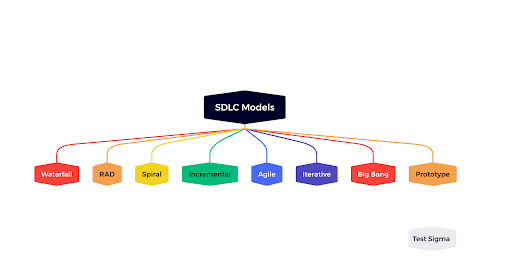
The Software Development Life Cycle (SDLC) is a systematic process used by software development teams to design, develop, test, and deploy software. It provides a structured framework for the development of high-quality software that meets user requirements and is delivered on time and within budget.
- Initiation:
- Description: This phase marks the beginning of the project. It involves defining the purpose, scope, and objectives of the project. Stakeholders are identified, and feasibility studies may be conducted to determine if the project is viable.
- Unique Aspect: One unique aspect could be the creation of a project charter that outlines the project’s objectives, scope, stakeholders, and initial budget and timeline.
- Planning:
- Description: In this phase, the project plan is created. This includes defining tasks, estimating resources and time required, creating a schedule, and establishing communication protocols. Risk management strategies are developed, and project milestones are identified.
- Unique Aspect: Utilizing techniques such as Agile methodologies, where planning is iterative and adaptable, allowing for flexibility in responding to changes.
- Requirements Gathering:
- Description: This stage involves gathering, analyzing, and documenting the requirements of the system from stakeholders. It includes understanding user needs, functional requirements, and any regulatory or compliance requirements.
- Unique Aspect: Employing user-centric design thinking methodologies to ensure that requirements are aligned with user needs and experiences.
- Design:
- Description: The design phase involves creating a detailed technical design based on the requirements gathered. It includes architectural design, database design, user interface design, and system interface design.
- Unique Aspect: Utilizing design patterns and principles to ensure scalability, maintainability, and reusability of code and components.
- Development:
- Description: This phase involves actual coding or development of the software system based on the design specifications. Developers write code, perform unit testing, and integrate individual components into a complete system.
- Unique Aspect: Adopting DevOps practices for continuous integration and deployment, enabling rapid and frequent releases while maintaining quality and stability.
- Testing:
- Description: Testing involves verifying that the software meets the specified requirements and quality standards. It includes various types of testing such as unit testing, integration testing, system testing, and user acceptance testing.
- Unique Aspect: Implementing test automation frameworks to streamline testing processes, increase test coverage, and improve efficiency.
- Deployment:
- Description: This phase involves deploying the software into the production environment. It includes activities such as installation, configuration, data migration, and user training.
- Unique Aspect: Implementing blue-green deployment or canary release strategies to minimize downtime and risks associated with deployment.
- Maintenance:
- Description: Maintenance involves ongoing support and enhancement of the software system once it is deployed. It includes fixing bugs, making updates to accommodate changing requirements, and optimizing performance.
- Unique Aspect: Utilizing feedback loops from users and stakeholders to continuously improve the software through iterative updates and enhancements.
Each stage of the SDLC is crucial for the successful development and deployment of software, and incorporating unique aspects can help tailor the process to specific project needs and challenges.



